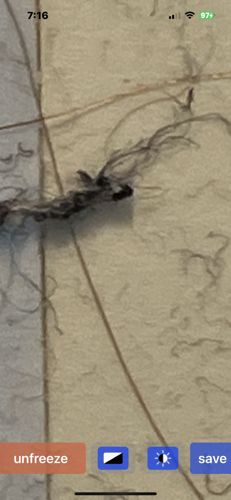Household Casebearer Moth
Scientific Name: Phereoeca uterella (sometimes referred to as Tinea uterella or Tineola uterella)
Order & Family: Lepidoptera, Tineidae
Size: Larval case: 10-15 mm (0.4-0.6 inches) long; Adult moth wingspan: 7-14 mm (0.3-0.55 inches)

Natural Habitat
Primarily indoor environments, especially in quiet, undisturbed areas of homes, museums, and storage facilities. They prefer damp, dark locations such as under furniture, in closets, basements, and attics.
Diet & Feeding
Larvae feed on a variety of materials found in homes, including natural fibers (wool, silk, felt, fur, feathers), spiderwebs, shed hair, and even dead insects and dried animal remains. They can also feed on synthetic materials if they have food residues.
Behavior Patterns
Larvae construct a silken case, often incorporating debris like sand, bits of plants, or fibers. They drag this case with them as they move. When ready to pupate, they seal off their case. Adults are small, inconspicuous moths that are generally nocturnal and attracted to lights.
Risks & Benefits
Potential risks include damage to natural fiber textiles, carpets, clothing, and stored goods, resulting in economic losses. They are generally considered a nuisance pest with no direct benefits to humans or the ecosystem in indoor settings.
Identified on: 8/27/2025